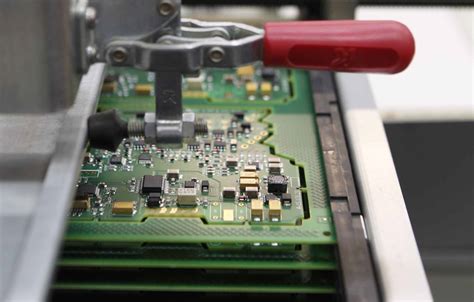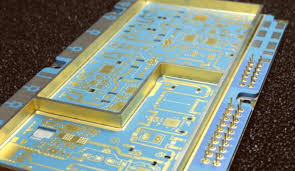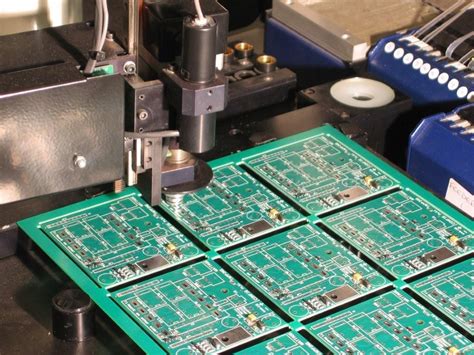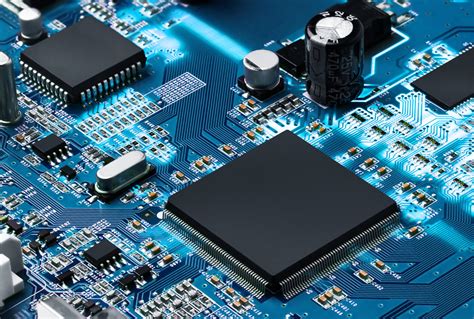Flex pcb adhesive
Understanding The Role Of Adhesives In Flex PCB Manufacturing
In the realm of modern electronics, the demand for compact, lightweight, and flexible devices has led to significant advancements in printed circuit board (PCB) technology. Among these innovations, flexible PCBs, or flex PCBs, have emerged as a pivotal component, offering unparalleled versatility and adaptability.
Central to the functionality and reliability of flex PCBs is the role of adhesives, which are crucial in maintaining the structural integrity and performance of these circuits. Understanding the role of adhesives in flex PCB manufacturing is essential for appreciating how these components meet the rigorous demands of contemporary electronic applications.
Flex PCBs are designed to bend and conform to various shapes, making them ideal for applications where space is limited or where the circuit must endure mechanical stress.
This flexibility is achieved through the use of flexible substrates, typically made from materials like polyimide, which provide the necessary pliability. However, the mere use of flexible substrates is not sufficient to ensure the durability and functionality of the circuit. This is where adhesives come into play, serving as the binding agent that holds the various layers of the flex PCB together.
Adhesives in flex PCB manufacturing perform several critical functions.
Firstly, they provide mechanical support, ensuring that the layers of the PCB remain securely bonded even when subjected to bending or twisting. This mechanical stability is vital for maintaining the electrical connections within the circuit, as any delamination or separation of layers could lead to circuit failure. Moreover, adhesives contribute to the thermal management of the PCB. By facilitating efficient heat dissipation, they help prevent overheating, which can degrade the performance and lifespan of electronic components.
In addition to mechanical and thermal considerations, adhesives also play a role in the electrical performance of flex PCBs.
They must possess dielectric properties that prevent electrical interference between the layers of the circuit. This is particularly important in high-frequency applications, where even minor electrical interference can significantly impact performance. Therefore, selecting the appropriate adhesive with the right dielectric properties is crucial for ensuring the optimal functionality of the flex PCB.
Furthermore, the choice of adhesive can influence the manufacturing process itself.
Different adhesives have varying curing times and temperature requirements, which can affect production efficiency and cost. Manufacturers must carefully consider these factors when selecting adhesives to balance performance with economic feasibility. Additionally, the environmental impact of adhesives is an increasingly important consideration. As the electronics industry moves towards more sustainable practices, the development of eco-friendly adhesives that do not compromise on performance is becoming a priority.
In conclusion, adhesives are an indispensable component in the manufacturing of flex PCBs, playing a multifaceted role that extends beyond mere bonding
They are integral to the mechanical, thermal, and electrical performance of the circuit, influencing both the reliability and efficiency of the final product. As technology continues to evolve, the development of advanced adhesives that meet the growing demands of flexible electronics will be crucial. By understanding the critical role of adhesives in flex PCB manufacturing, industry professionals can make informed decisions that enhance the performance and sustainability of their products, ultimately driving innovation in the field of electronics.

Key Benefits Of Using High-Quality Adhesives In Flexible PCBs
Flexible printed circuit boards (PCBs) have become an integral component in modern electronic devices, offering a versatile and efficient solution for complex circuitry needs. One of the critical elements that contribute to the performance and reliability of flexible PCBs is the adhesive used in their construction. High-quality adhesives play a pivotal role in ensuring the durability, flexibility, and functionality of these circuits. Understanding the key benefits of using superior adhesives in flexible PCBs can provide valuable insights into their importance in the electronics industry.
To begin with, high-quality adhesives enhance the mechanical stability of flexible PCBs.
These adhesives are designed to withstand various environmental stresses, such as temperature fluctuations, humidity, and mechanical vibrations. By providing a robust bond between the different layers of the PCB, they prevent delamination and ensure that the circuit remains intact even under challenging conditions. This mechanical stability is crucial for applications where the PCB is subject to constant movement or bending, such as in wearable technology or automotive electronics.
Moreover, the use of premium adhesives in flexible PCBs contributes to improved thermal management.
As electronic devices become more compact and powerful, efficient heat dissipation becomes increasingly important. High-quality adhesives possess excellent thermal conductivity properties, allowing them to effectively transfer heat away from critical components. This capability not only enhances the performance of the device but also extends its lifespan by preventing overheating and potential damage to sensitive components.
In addition to mechanical and thermal benefits, high-quality adhesives offer superior electrical insulation properties.
This is particularly important in flexible PCBs, where maintaining electrical integrity is paramount. These adhesives prevent short circuits and electrical leakage by providing a reliable insulating barrier between conductive traces. Consequently, they ensure that the electronic device operates safely and efficiently, reducing the risk of malfunctions or failures.
Furthermore, the use of advanced adhesives in flexible PCBs facilitates miniaturization, a key trend in modern electronics
. As devices become smaller and more complex, the need for compact and efficient circuit designs becomes more pronounced. High-quality adhesives enable the creation of thinner and lighter PCBs without compromising on performance or reliability. This capability is essential for the development of next-generation electronic devices, where space and weight constraints are critical considerations.
Another significant advantage of using high-quality adhesives in flexible PCBs is their resistance to chemical exposure.
Electronic devices are often exposed to various chemicals during manufacturing processes or in their operational environments. Superior adhesives are formulated to resist degradation from these chemicals, ensuring that the PCB maintains its integrity and functionality over time. This chemical resistance is particularly important in industries such as medical devices or aerospace, where reliability and longevity are paramount.
In conclusion, the use of high-quality adhesives in flexible PCBs offers numerous benefits that enhance the performance, reliability, and longevity of electronic devices. From providing mechanical stability and thermal management to ensuring electrical insulation and facilitating miniaturization, these adhesives are a critical component in the design and manufacture of modern electronics. As technology continues to evolve, the demand for advanced adhesives that can meet the challenges of increasingly complex and compact devices will only grow, underscoring their importance in the future of electronics.

Comparing Different Types Of Adhesives For Flex PCB Applications
In the realm of flexible printed circuit boards (flex PCBs), the choice of adhesive plays a crucial role in determining the performance, reliability, and longevity of the final product. As the demand for more compact and versatile electronic devices continues to grow, understanding the nuances of different adhesive types becomes increasingly important. Flex PCBs, known for their ability to bend and conform to various shapes, require adhesives that can maintain their integrity under mechanical stress and environmental conditions. Therefore, selecting the appropriate adhesive is not merely a matter of preference but a critical decision that impacts the overall functionality of the device.
To begin with, pressure-sensitive adhesives (PSAs) are commonly used in flex PCB applications due to their ease of application and ability to form strong bonds at room temperature. PSAs are particularly advantageous in scenarios where heat-sensitive components are involved, as they do not require thermal activation. However, while PSAs offer convenience, they may not always provide the level of durability needed for high-stress environments. Consequently, they are often best suited for applications where the flex PCB is not subjected to extreme conditions.
In contrast, thermosetting adhesives offer superior mechanical strength and thermal stability, making them ideal for more demanding applications.
These adhesives require heat to cure, which results in a robust bond capable of withstanding significant mechanical and thermal stress. The curing process, however, necessitates careful temperature control to avoid damaging sensitive components on the flex PCB. Despite this requirement, the enhanced performance characteristics of thermosetting adhesives make them a preferred choice for applications where reliability is paramount.
Moreover, thermoplastic adhesives present another viable option, particularly for applications requiring reworkability.
Unlike thermosetting adhesives, thermoplastics can be reheated and reshaped, allowing for adjustments and repairs. This property is particularly beneficial in prototyping and iterative design processes. However, it is important to note that thermoplastic adhesives may not offer the same level of thermal resistance as their thermosetting counterparts, which could limit their use in high-temperature environments.
Additionally, epoxy-based adhesives are frequently employed in flex PCB applications due to their excellent adhesion properties and chemical resistance.
Epoxies can be formulated to meet specific performance criteria, such as flexibility or rigidity, depending on the application’s requirements. Their versatility makes them a popular choice across various industries, from consumer electronics to aerospace. However, the curing process for epoxy adhesives can be time-consuming, which may impact production timelines.
Furthermore, silicone adhesives are renowned for their flexibility and resistance to extreme temperatures, making them suitable for applications where the flex PCB is exposed to harsh environmental conditions. Silicones provide excellent electrical insulation and can accommodate significant thermal expansion and contraction without compromising the bond. This makes them particularly useful in automotive and industrial applications where temperature fluctuations are common.
In conclusion, the selection of an adhesive for flex PCB applications is a multifaceted decision that requires careful consideration of the specific demands of the application. Each adhesive type offers distinct advantages and limitations, and the choice ultimately depends on factors such as mechanical stress, thermal conditions, and the need for reworkability. By understanding the properties and performance characteristics of different adhesives, engineers and designers can make informed decisions that enhance the functionality and reliability of flex PCBs in their respective applications.
Best Practices For Applying Adhesives In Flex PCB Assembly
In the realm of electronics manufacturing, the assembly of flexible printed circuit boards (flex PCBs) presents unique challenges and opportunities. One critical aspect of this process is the application of adhesives, which play a pivotal role in ensuring the structural integrity and functionality of the final product. To achieve optimal results, it is essential to adhere to best practices when applying adhesives in flex PCB assembly.
To begin with, selecting the appropriate adhesive is paramount.
The choice of adhesive depends on several factors, including the materials involved, the operating environment, and the specific requirements of the application. For instance, some adhesives are designed to withstand high temperatures, while others offer superior flexibility or chemical resistance. Therefore, a thorough understanding of the properties of different adhesives is crucial in making an informed decision.
Once the appropriate adhesive has been selected, surface preparation becomes the next critical step.
Proper surface preparation ensures that the adhesive bonds effectively to the substrate, thereby enhancing the durability and reliability of the assembly. This typically involves cleaning the surfaces to remove any contaminants such as dust, oils, or residues that could interfere with adhesion. In some cases, additional treatments like plasma cleaning or chemical etching may be necessary to optimize the surface for bonding.
Following surface preparation, the method of adhesive application must be carefully considered.
Various techniques are available, including screen printing, dispensing, and lamination, each with its own advantages and limitations. The choice of method often depends on the design and complexity of the flex PCB, as well as the specific adhesive being used. For example, screen printing is well-suited for applying adhesives in precise patterns, while dispensing allows for greater control over the volume of adhesive applied.
Moreover, controlling the application environment is essential to ensure consistent adhesive performance.
Factors such as temperature, humidity, and cleanliness can significantly impact the curing process and the final bond strength. Maintaining a controlled environment helps to minimize variations and defects, thereby improving the overall quality of the assembly. Additionally, it is important to monitor the adhesive’s pot life and working time to prevent premature curing or degradation.
After application, the curing process is a critical phase that determines the final properties of the adhesive bond.
Depending on the adhesive type, curing may involve exposure to heat, UV light, or moisture. It is vital to follow the manufacturer’s recommended curing conditions to achieve the desired bond strength and performance. Inadequate curing can lead to weak bonds, while excessive curing may cause damage to the flex PCB or other components.
Finally, quality control measures should be implemented throughout the adhesive application process to ensure that the assembly meets the required standards.
This may involve visual inspections, bond strength testing, and other non-destructive evaluation techniques. By identifying and addressing potential issues early in the process, manufacturers can reduce the risk of failures and improve the reliability of the final product.
In conclusion, the application of adhesives in flex PCB assembly is a complex process that requires careful consideration of various factors. By selecting the right adhesive, preparing surfaces properly, choosing an appropriate application method, controlling the environment, and ensuring proper curing and quality control, manufacturers can achieve high-quality assemblies that meet the demands of modern electronic applications.







